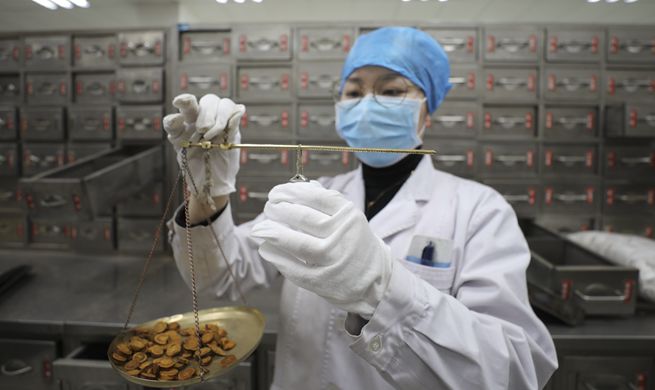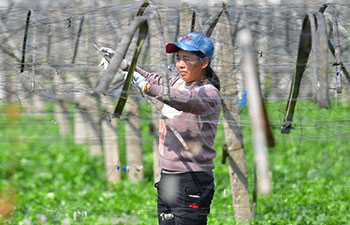CHICAGO, Feb. 18 (Xinhua) -- Northwestern University (NU) researchers have determined the 3D atomic structure of a key complex in paramyxoviruses, a family of viruses that includes mumps, human parainfluenza and respiratory syncytial virus (RSV).
To find the unique structure, the researchers used cryogenic electron microscopy (cryo-EM), which works by blasting a stream of electrons at a flash-frozen sample to take many 2D images.
With the help of the technology, the researchers captured hundreds of thousands of images of one sample of human parainfluenza virus 5 polymerase. They then used computational algorithms to reconstruct a 3D image.
The resulting image was an irregular, round-shaped globule with a long tail made of four phosphoproteins, or proteins containing phosphorous. The structure contains more than 2,000 amino acids and five proteins.
"Part of the image was expected," said Robert Lamb, a professor of molecular biosciences in NU's Weinberg College of Arts and Sciences who co-led the study. "But part of it was a surprise. Two of the proteins are completely new. They have never been seen before."
The researchers also found that this virus uses the same protein to switch between genome replication and transcription.
"This machinery has a dual-function," said Yuan He, an assistant professor of molecular biosciences in Weinberg. "It gets both jobs done with one enzyme. The virus's genome is so small, and this gives it economy of scale."
The researchers hope this work can help others design and develop new drugs for illnesses such as measles and mumps, which have experienced outbreaks in past years.
"A lot of people don't want to get vaccinated, and they're getting the disease," Lamb said. "And for people who are vaccinated, it still takes three to four weeks for that vaccine to take effect. We need more antiviral drugs so people who get infected can be treated immediately."
The study is scheduled to be published online this week in the Proceedings of the National Academy of Sciences.

















